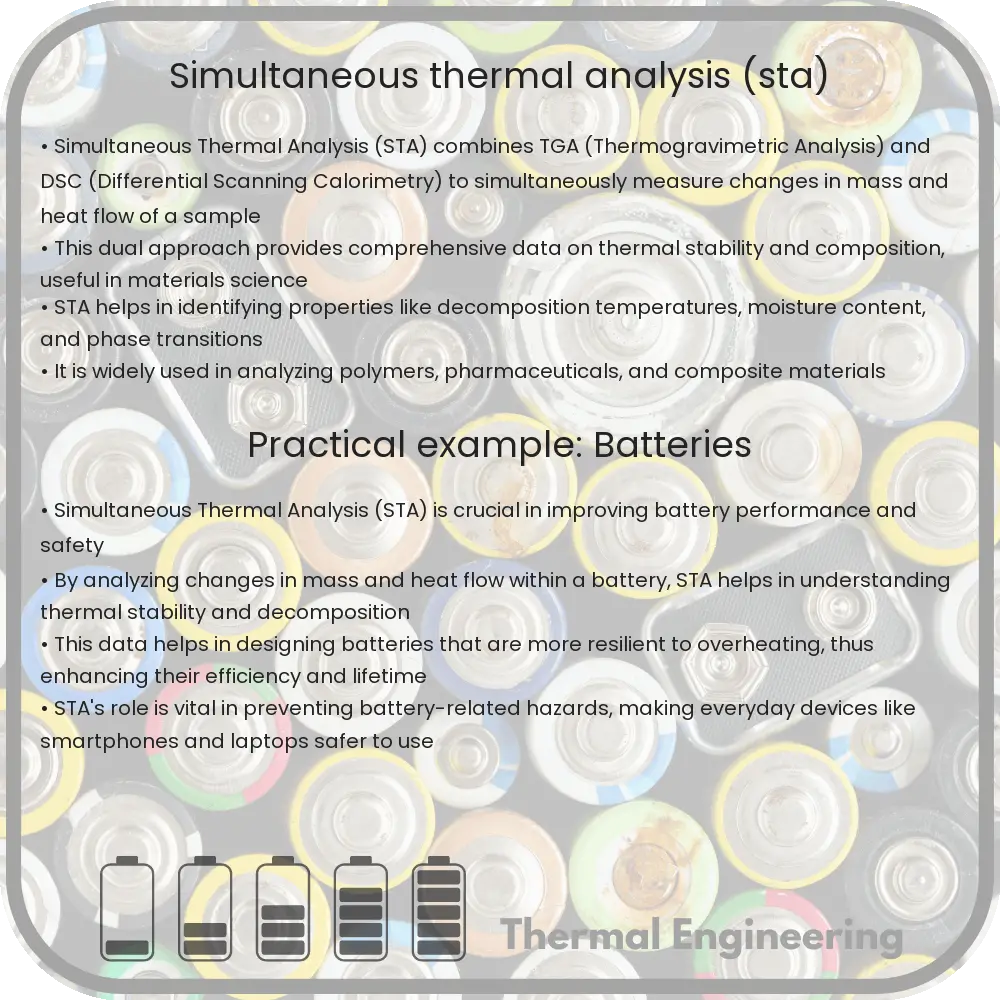Learn about Simultaneous Thermal Analysis (STA), combining Thermogravimetric Analysis (TGA) and Differential Scanning Calorimetry (DSC) for material evaluation.

Understanding Simultaneous Thermal Analysis (STA)
Simultaneous Thermal Analysis (STA) is a powerful technique in the field of materials science that combines two thermal analysis methods: Thermogravimetric Analysis (TGA) and Differential Scanning Calorimetry (DSC). STA provides crucial information about the physical and chemical changes that a material undergoes as it is heated or cooled, making it indispensable in both research and industrial applications.
How STA Works
STA analyzers are designed to simultaneously measure changes in mass (TGA) and heat flow (DSC) related to temperature changes in a sample. This dual measurement allows for the comprehensive analysis of materials under various conditions of temperature and atmosphere provided by a controlled environment.
- Thermogravimetric Analysis (TGA): In TGA, the mass of a sample is measured over time as the temperature changes. This method helps in identifying at what temperature a material decomposes, oxidizes, or loses volatile components.
- Differential Scanning Calorimetry (DSC): DSC involves measuring the heat flow into or out of a sample compared to a reference under identical conditions. This helps in identifying endothermic (heat absorbing) and exothermic (heat releasing) reactions as well as phase transitions such as melting, crystallization, and glass transitions.
Key Applications of STA
STA is utilized in numerous fields such as pharmaceuticals, polymers, food science, and nanotechnology. Its applications include:
- Material Development: STA helps in characterizing new materials by providing data on decomposition temperatures, moisture content, and thermal stability.
- Quality Control: Regular STA testing can ensure that raw materials and finished products meet their specifications for thermal stability and composition.
- Research: By providing insights into the thermal properties of materials, STA can help to better understand material behavior under different environmental conditions.
Advantages of STA
Combining TGA and DSC into a single experiment offers several advantages:
- Efficiency: Simultaneous measurements reduce the time and costs associated with separate tests.
- Correlation: Observing mass loss and heat flow together helps in correlating thermal events to specific material reactions or transitions.
- Analysis Under Real Conditions: STA can simulate real-world conditions, providing more relevant data for industrial processes or product performance.
Conclusion
Simultaneous Thermal Analysis is a critical tool in the arsenal of a material scientist or engineer. By integrating the capabilities of TGA and DSC, STA allows for a detailed understanding of material properties, enhancing both the development of new materials and the improvement of existing ones. With its broad application scope and efficient operation, STA plays a pivotal role in advancing materials science and engineering fields.